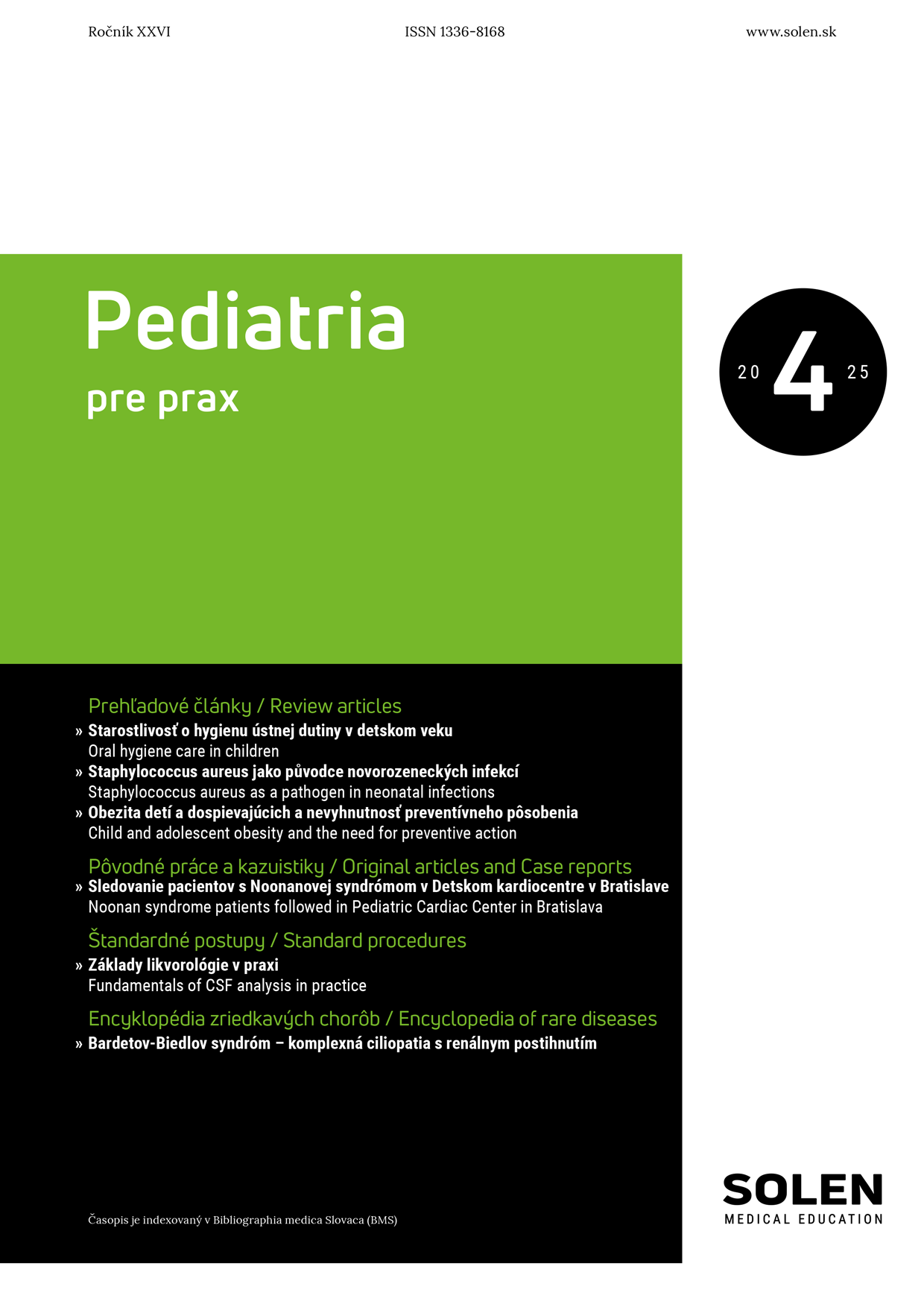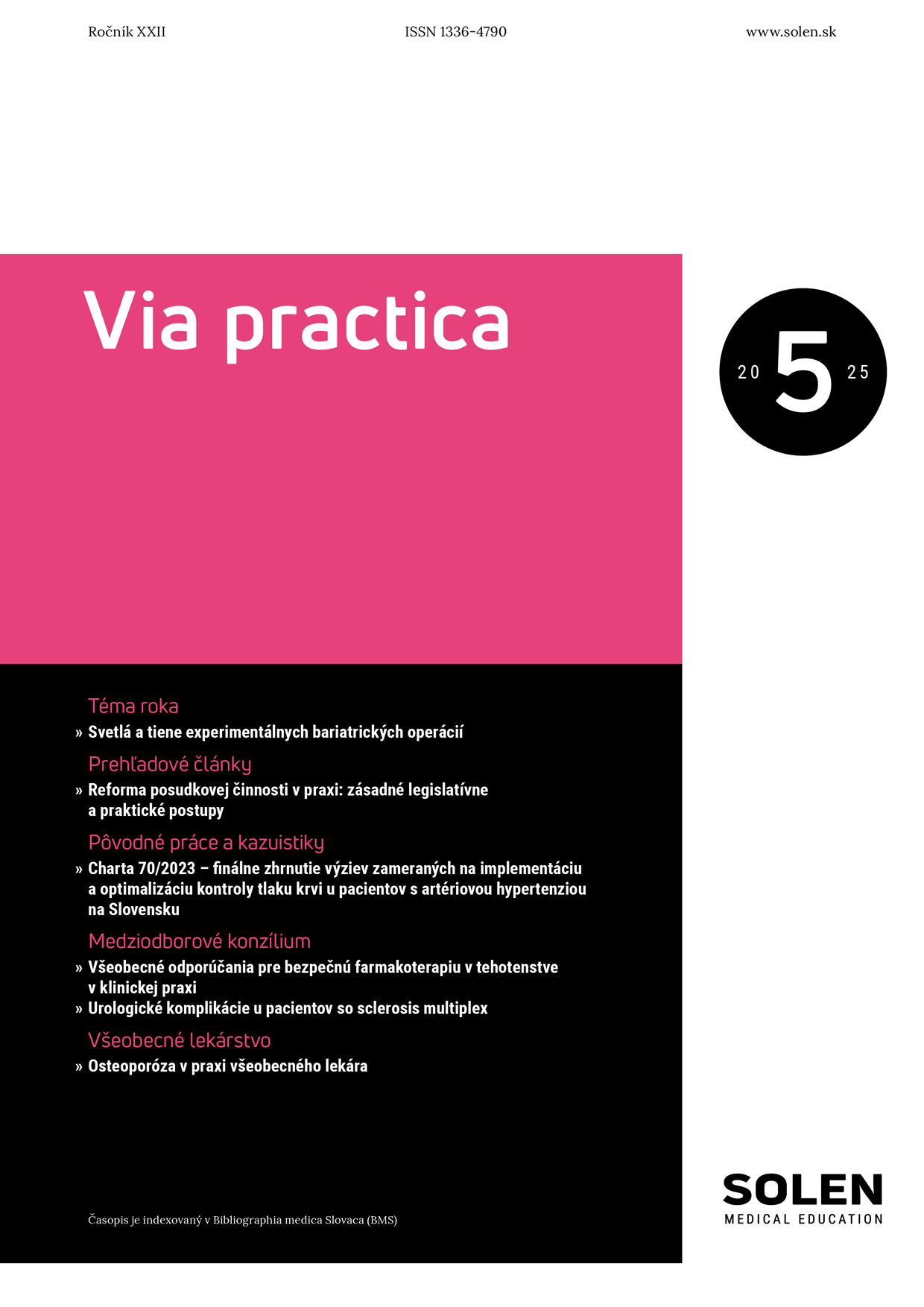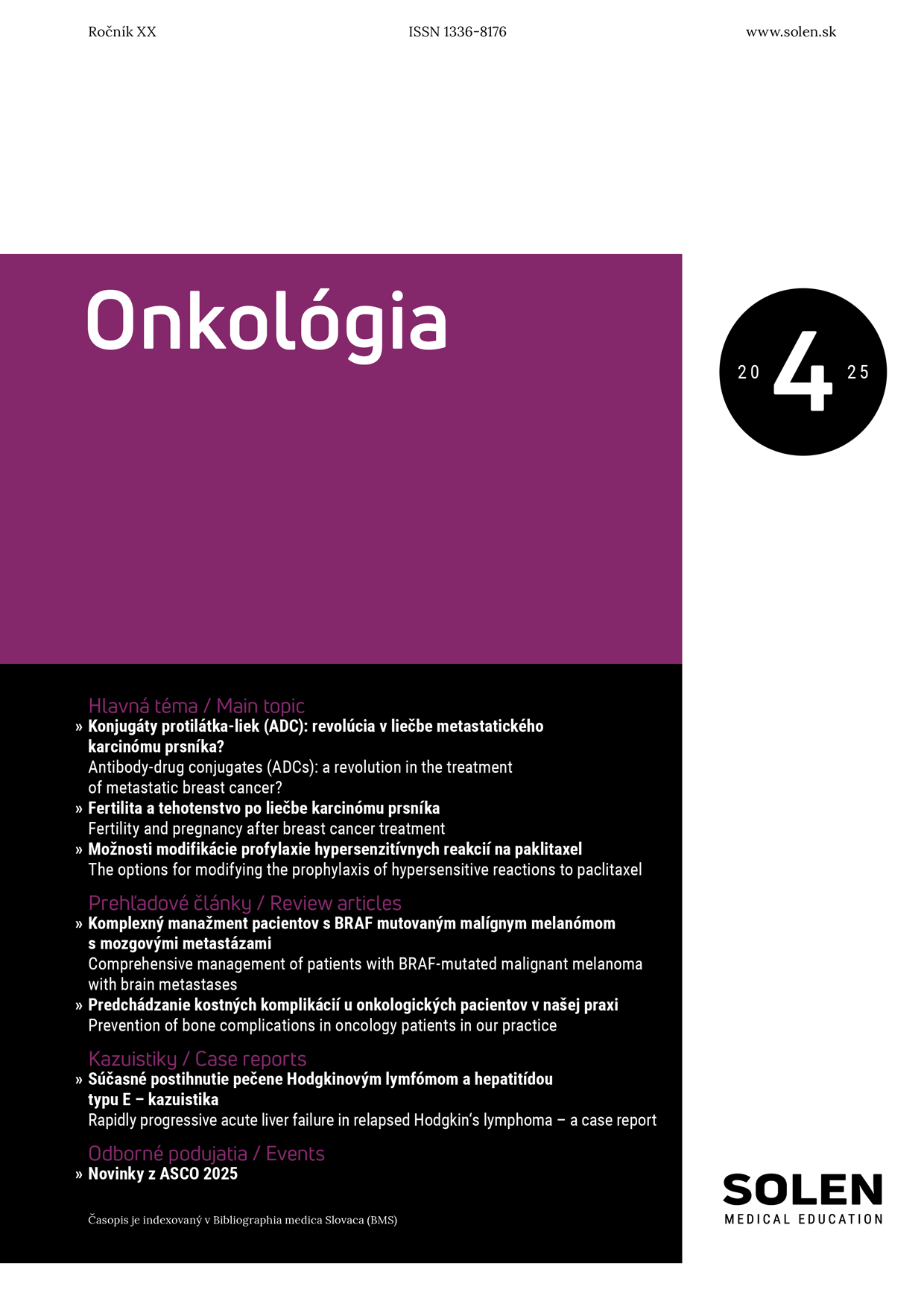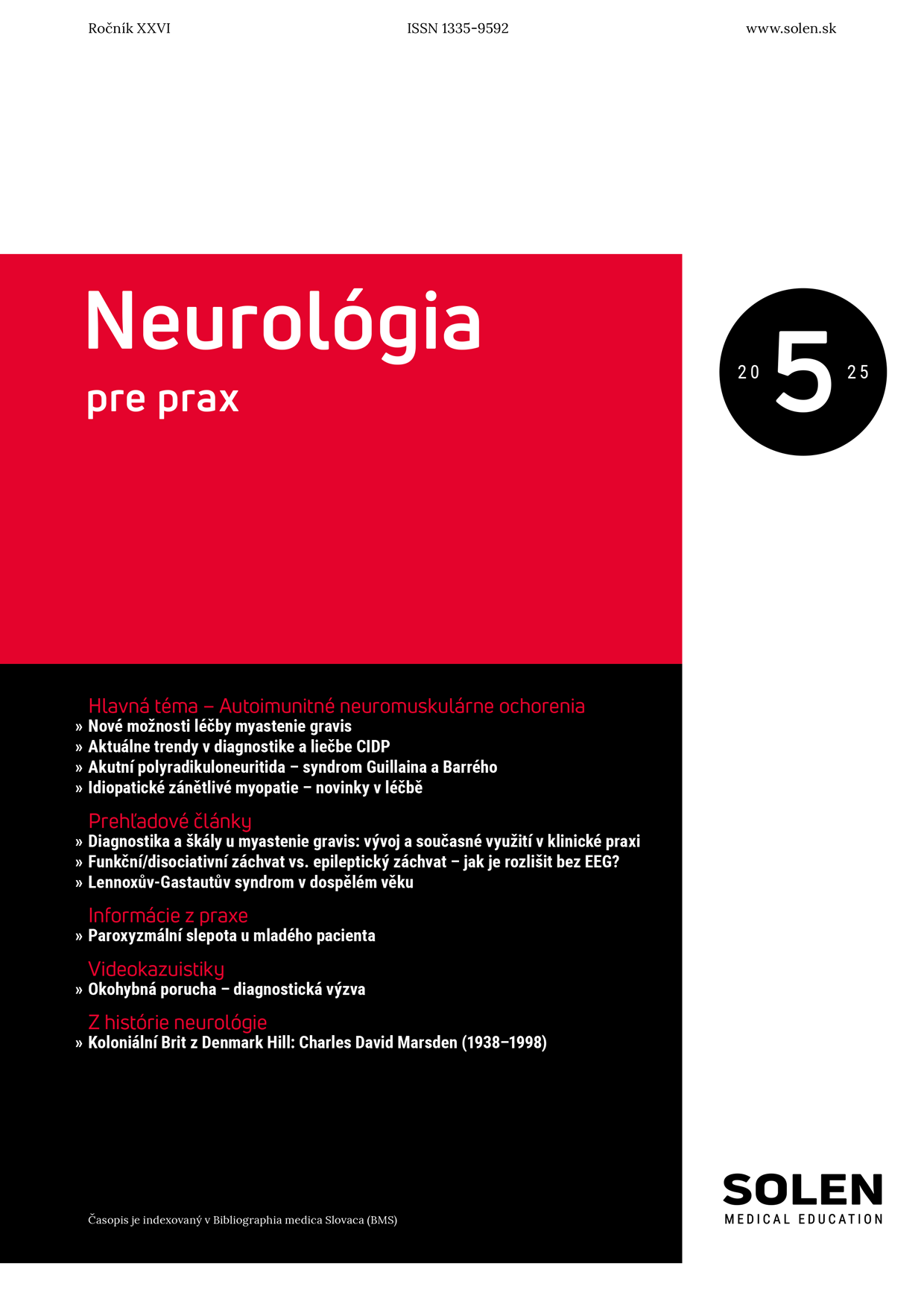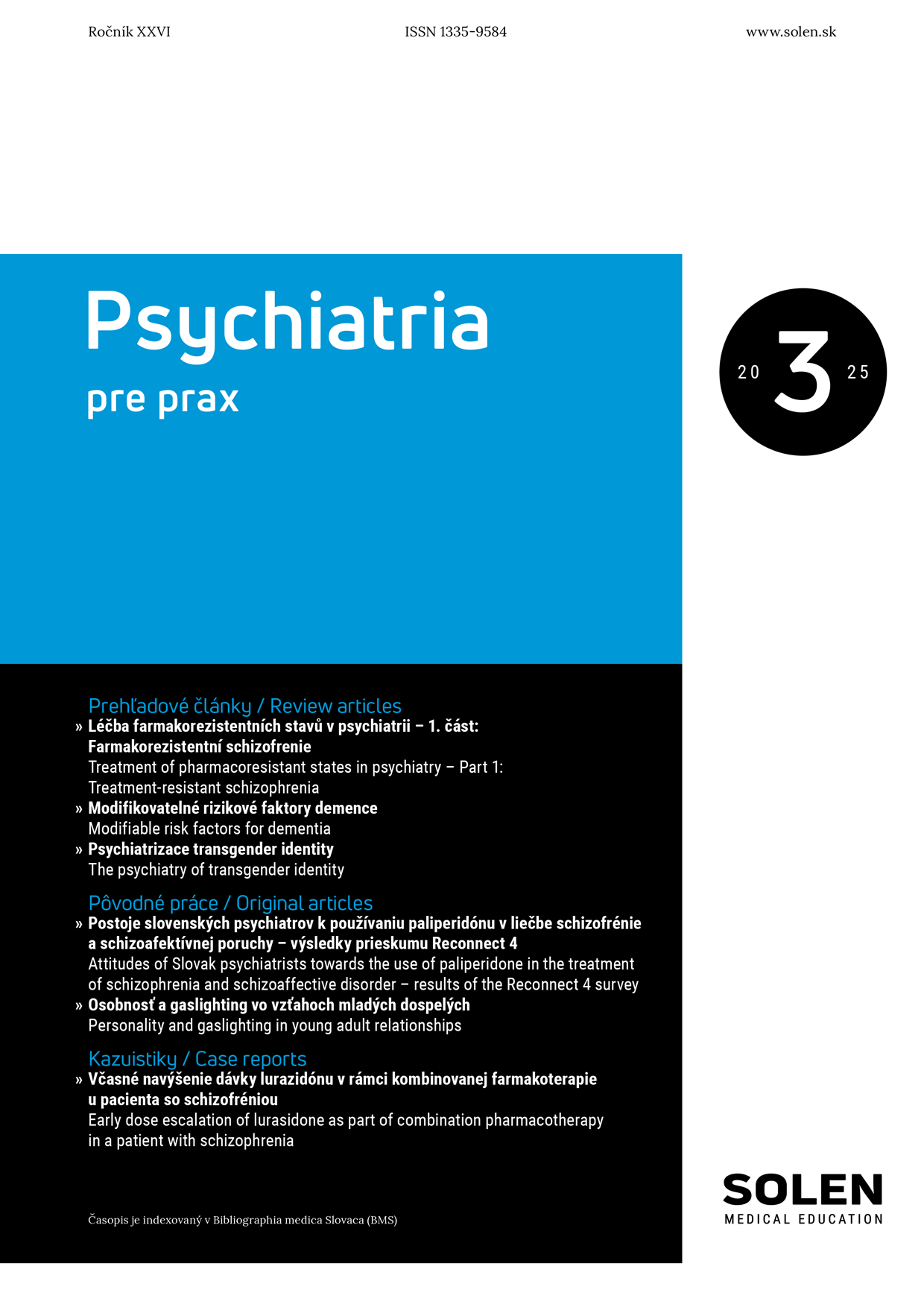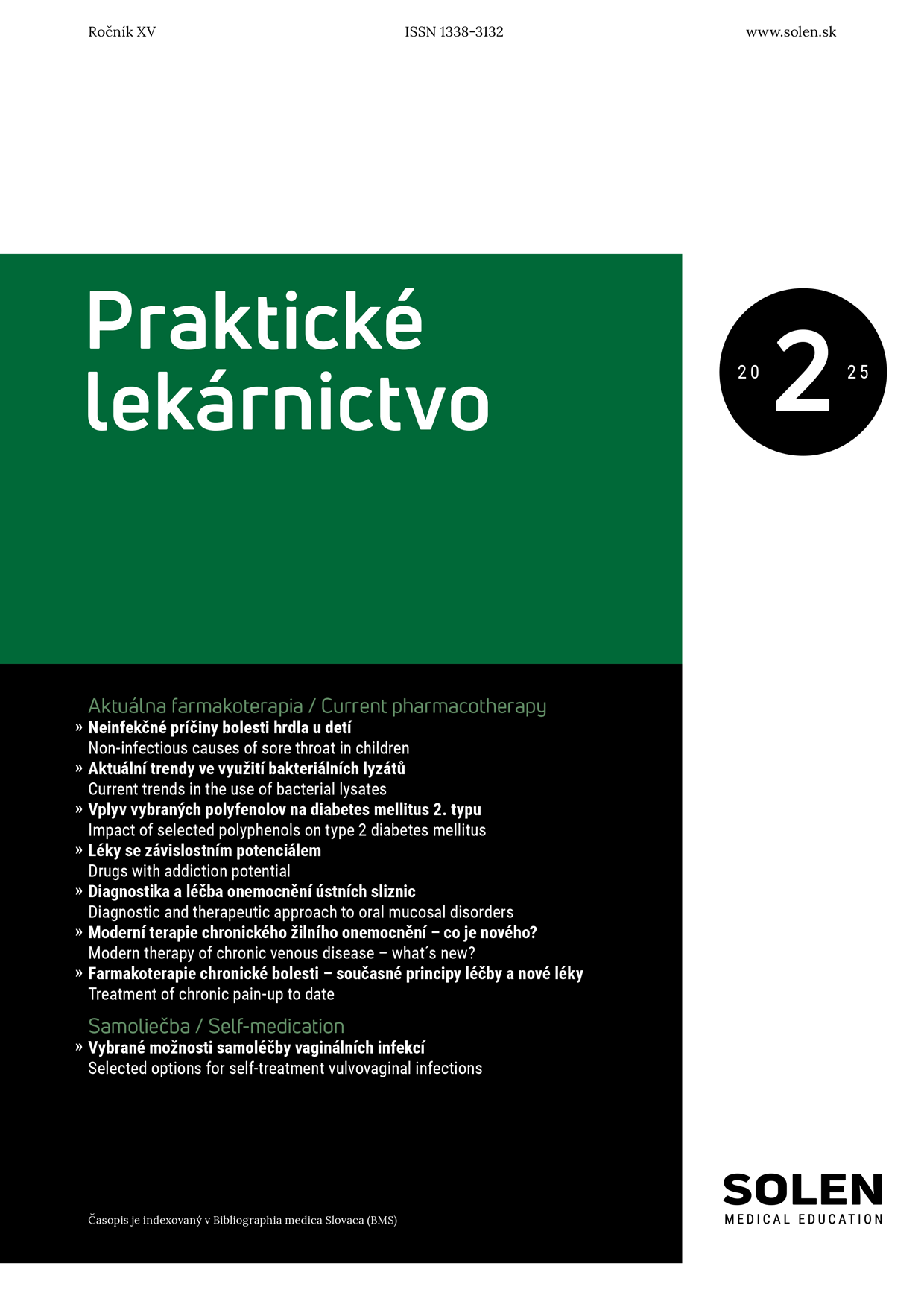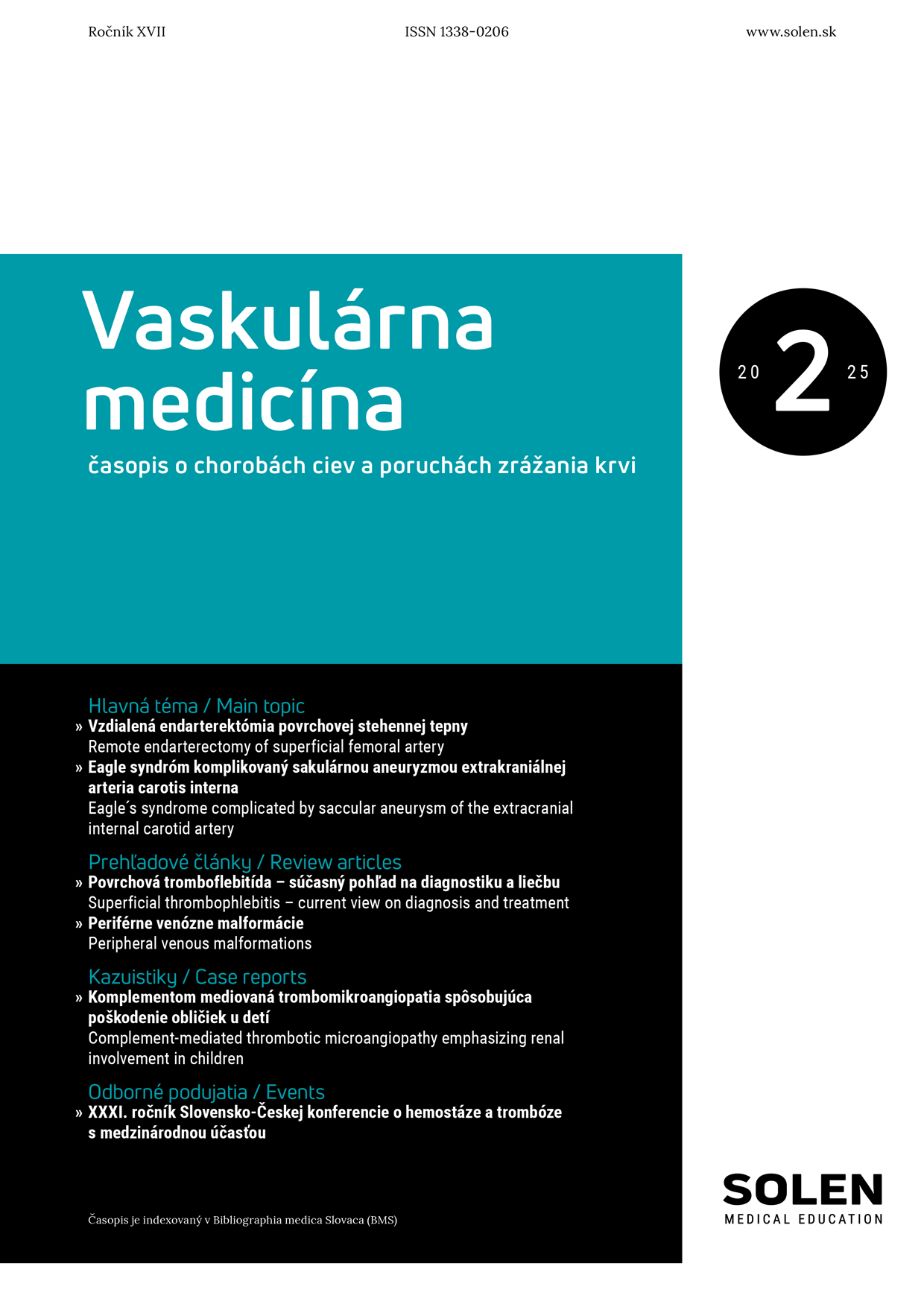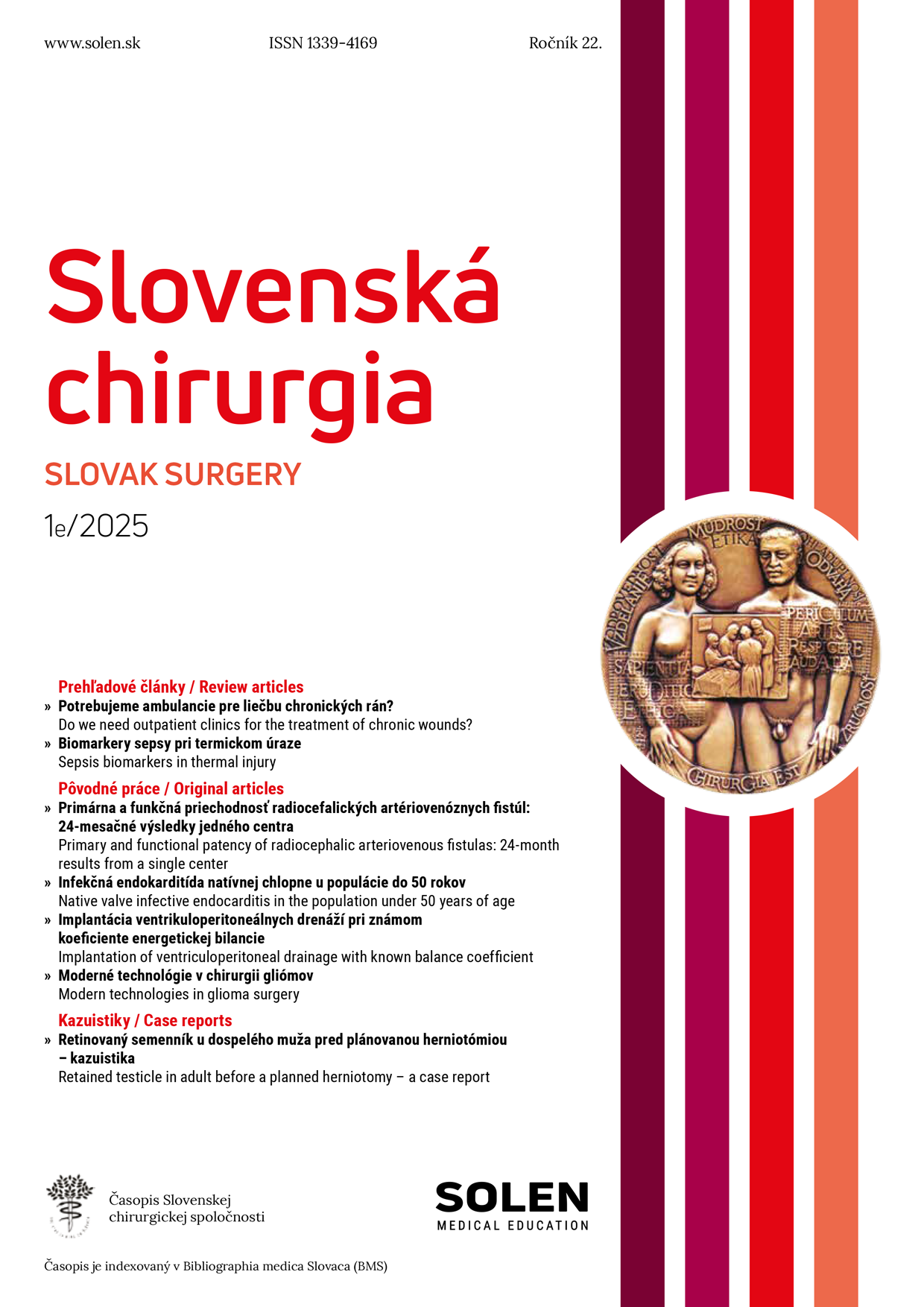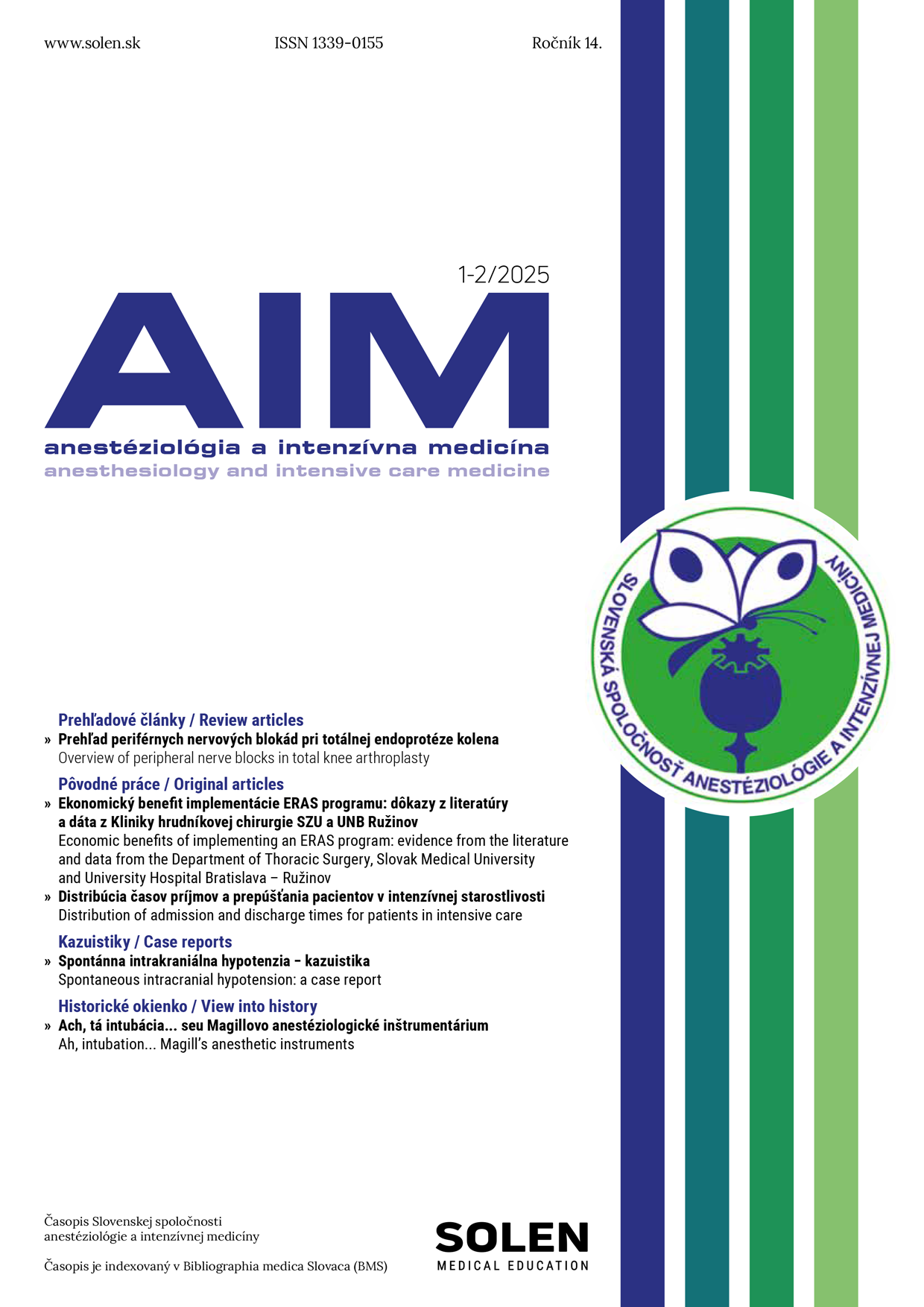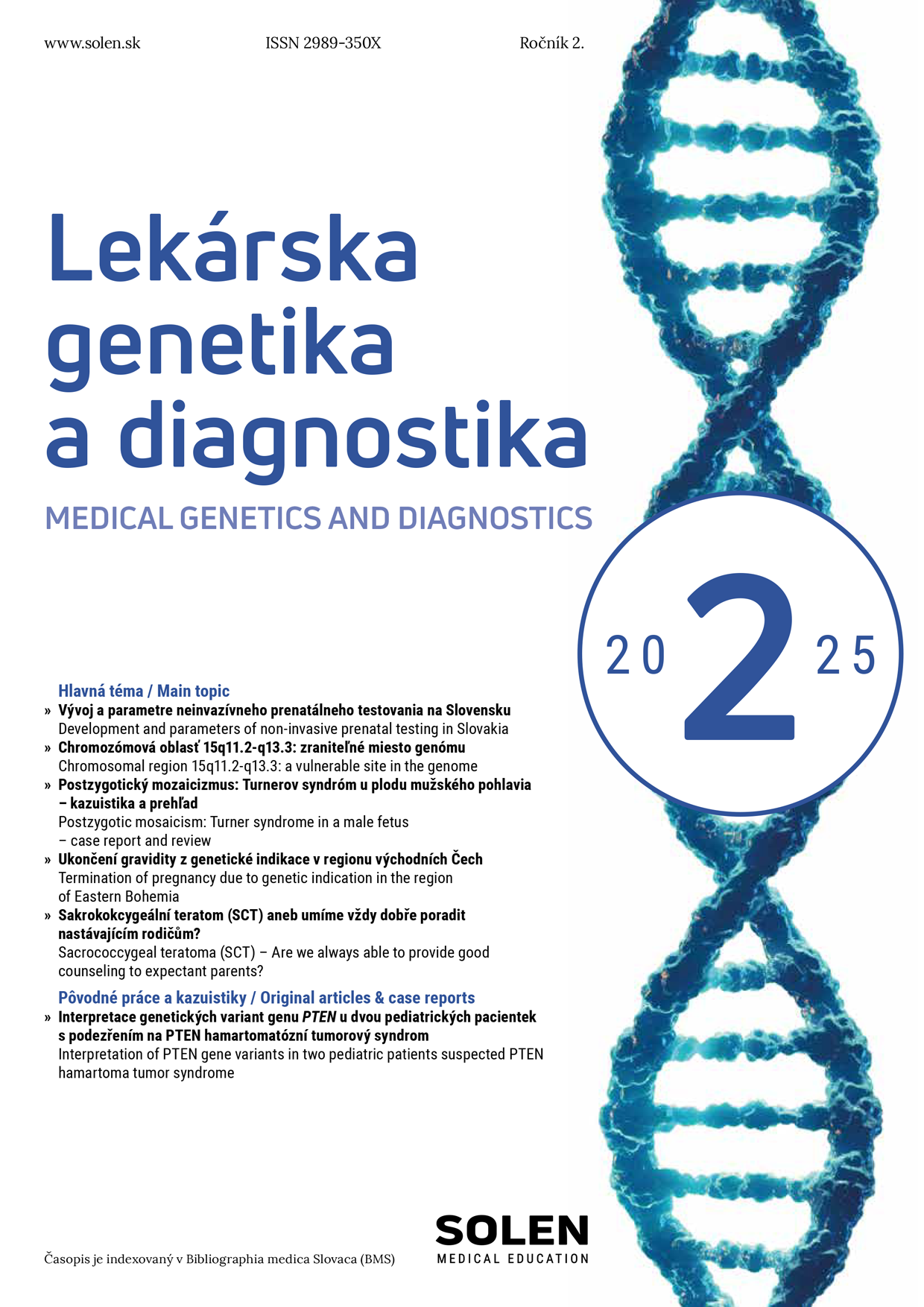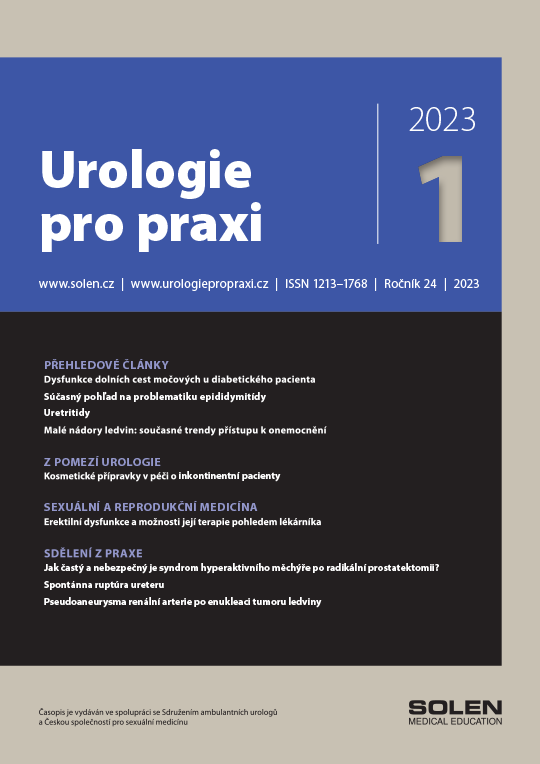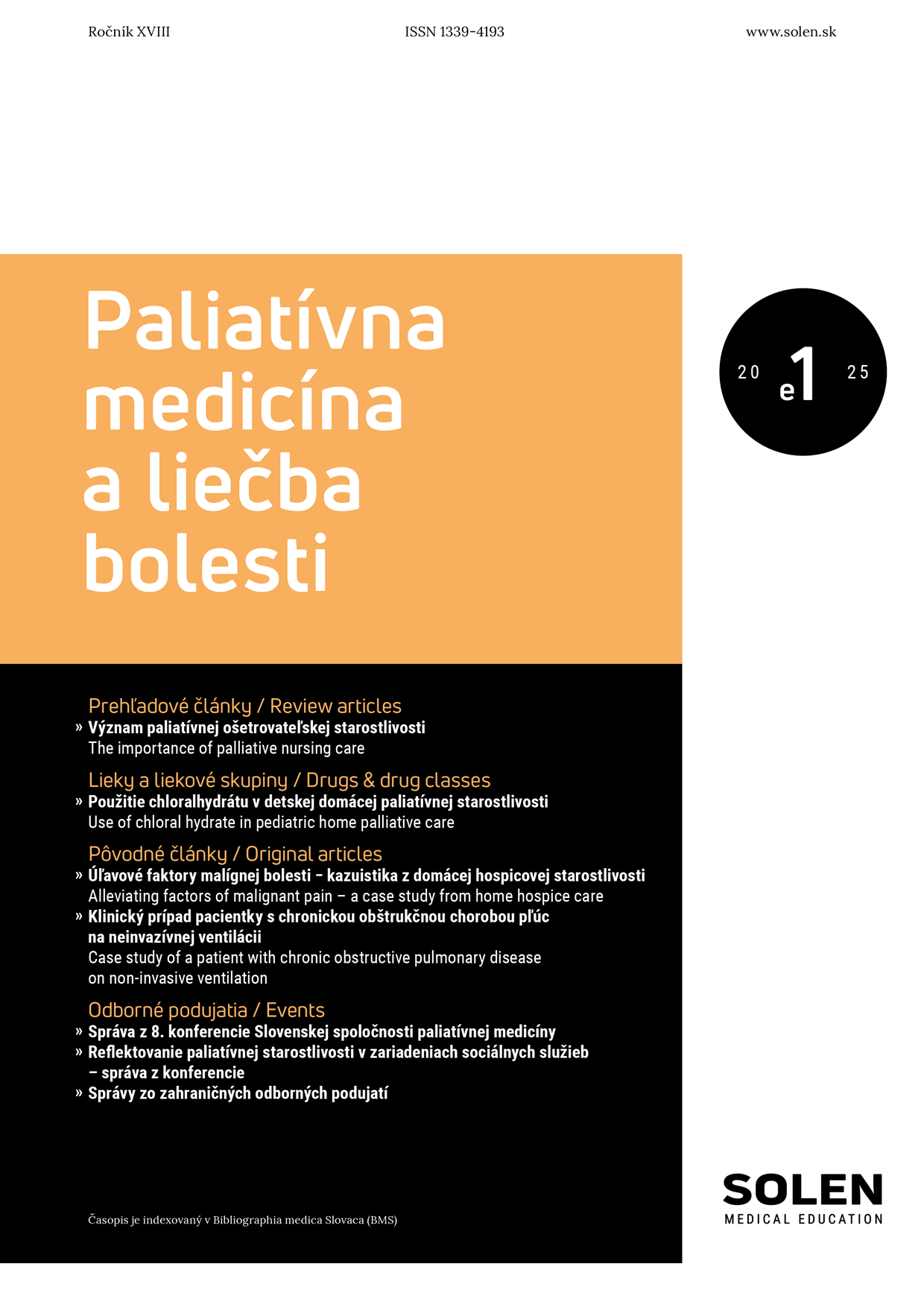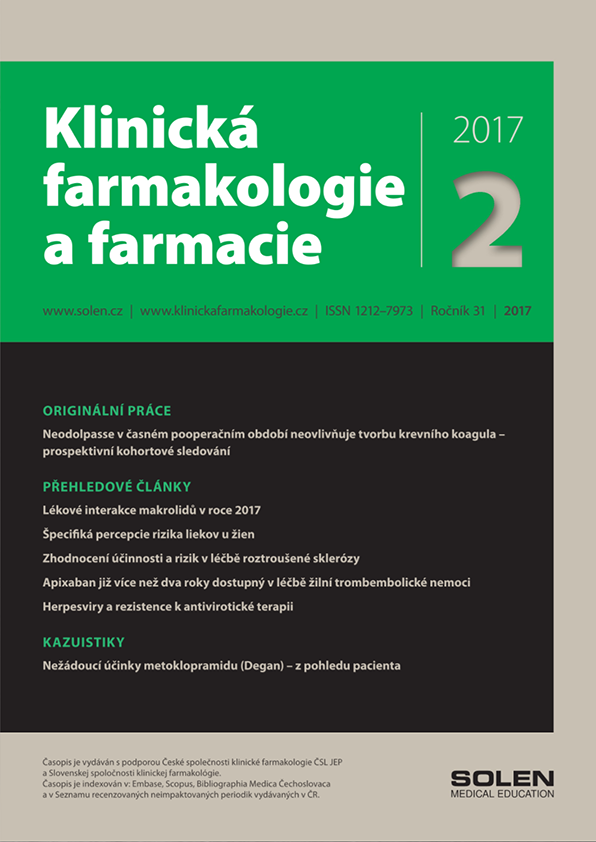Onkológia 3/2025
Awake surgery for brain tumors in children and adolescents
Introduction: Although awake surgery (AS) has recently been presented as a therapeutic option in the latest guidelines for the treatment of pediatric malignant brain gliomas, a study regarding AS in pediatric and adolescent patients is lacking in the Slovak Republic. The aim of this study is to retrospectively analyze the course of AS in pediatric and adolescent patients who were operated on under awake conditions at the Department of Neurosurgery of the Faculty of Medicine of the Comenius University and the University Hospital Bratislava and to evaluate the feasibility of AS in this age group. Methods: A retrospective study was performed on a cohort of pediatric and adolescent patients with primary tumors and cavernous hemangiomas (cavernous malformations, cavernomas) of the brain operated under awake conditions at the Department of Neurosurgery of the Faculty of Medicine of the Comenius University and the University Hospital Bratislava from 2010 to 2019. The course of AS described in the surgical reports was analyzed in order to identify the intraoperative complications associated with the surgeries under awake conditions. Results: 10 pediatric and adolescent patients (5 males and 5 females), aged 12 to 19 years were operated on under awake conditions. One patient was re-operated due to tumor recurrence after malignant transformation, the reoperation was also performed under awake conditions. Speech and language, motor, visual and memory functions were monitored intraoperatively. Patient cooperation was fully sufficient in seven cases. In all but one case, AS were completed at one stage. In one 19-year-old female patient, AS of an insular glioma had to be discontinued due to panic attack, choreatotic movements and nausea; AS was successfully completed in the second phase. In one 18-year-old patient, cooperation was severely limited by apathy; however, AS was successfully completed despite suboptimal cooperation. One 18-year-old patient vomited twice intraoperatively, yet the procedure was successfully completed. Paradoxically, in the youngest 12-year-old patient, intraoperative cooperation was excellent. Conclusion: Although the preoperative preparation as well as the actual performance of awake brain surgery in children and adolescents are challenging and have their own specificities, with the use of years of experience with this type of procedures, they can be performed safely when properly indicated.
Keywords: childhood, adolescence, awake surgery, brain, tumor


